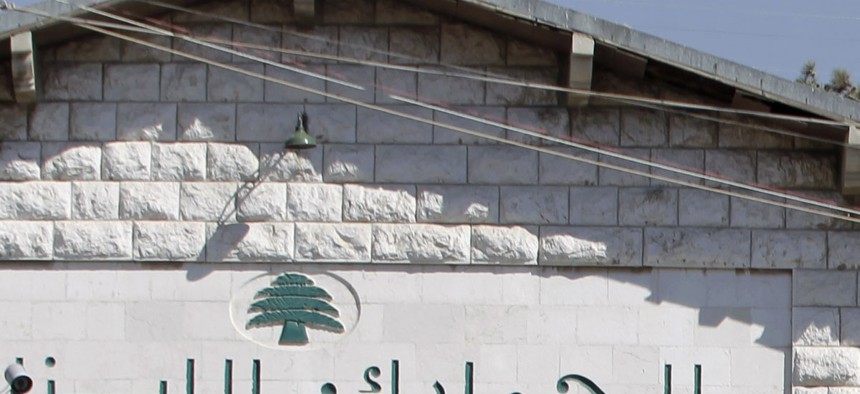
Inspectors from the OPCW at a border crossing between Lebanon and Syria Bilal Hussein/AP
How Many Chemical Weapons Sites Does Syria Have?
Syria just submitted a report that details the scope and size of its chemical weapons sites -- but it's classified so it's still unclear just how many sites there are. By Global Security Newswire
Syria has submitted an official report detailing the contents of its chemical-weapons arsenal to international overseers, though it remains unclear if the embattled country has more than 23 locations holding the poisonous arms, the New York Times reported on Sunday.
The Organization for the Prohibition of Chemical Weapons on Sunday announced that President Bashar Assad's regime submitted its "formal initial declaration" of its chemical-weapons program, along with a "general plan of destruction," to its Executive Council last Thursday. The Hague-based organization said it is using that declaration to devise its final plan for "a systematic, total and verified destruction of declared chemical weapons and production facilities" in Middle Eastern nation enmeshed in a bloody civil war.
However, because the document the Syrian government submitted is confidential, precise details are not known about what the country unveiled -- including whether it has more chemical-arms sites beyond the 23 it identified in September in a preliminary declaration.
U.S. officials believe Assad's forces have at least 45 chemical-arms sites. They have said Syria's preliminary OPCW declaration possibly could have cited only 23 locales because the regime consolidated some of its chemical facilities, or because that September document simply was not complete.
"It is of the greatest importance that that document be complete," an unidentified senior State Department official said this month, according to the Times.
Assad admitted his forces possess chemical weapons and agreed to their destruction in September, after a nerve-gas attack on civilians weeks earlier raised the possibility of U.S. military intervention against Assad's government. The development spurred a fast-track OPCW effort to inventory and eliminate the Syrian chemical arsenal by mid-2014.
On Monday, international chemical-arms inspectors completed their first round of "verification activities" in Syria, which began on Oct. 6, according to an OPCW announcement. The OPCW and U.N. personnel visited 21 of the 23 locations Syria initially identified.
"The two remaining sites have not been visited due to security reasons," according to the chemical-weapons body. "Efforts by the [OPCW-UN] Joint Mission [in Syria] to ensure the conditions necessary for safe access to those sites will continue."
Another detail not known about the Syrian government's new declaration is whether it says the country has any so-called "live agents" in its chemical-arms arsenal that cannot safely be transported out of the country for destruction. However, chemical-arms expert Paul Walker, a program director at Green Cross International, last week said he believes "the stockpile is probably almost 100 percent precursor chemicals," which can be moved safely.
The international inspectors oversaw Syrian workers who destroyed equipment such as unarmed missile warheads, but they did not actually destroy the toxic agents. Several countries -- including Albania, Belgium and France -- are being considered as possible locations for the actual weapons disposal work. However, Norway last week said it would not allow those materials in its borders.
The Organization for the Prohibition of Chemical Weapons has a Nov. 1 deadline to render Syria unable to make any more chemical arms.
NEXT STORY: Russia Ready to 'Compromise' on NATO Shield




